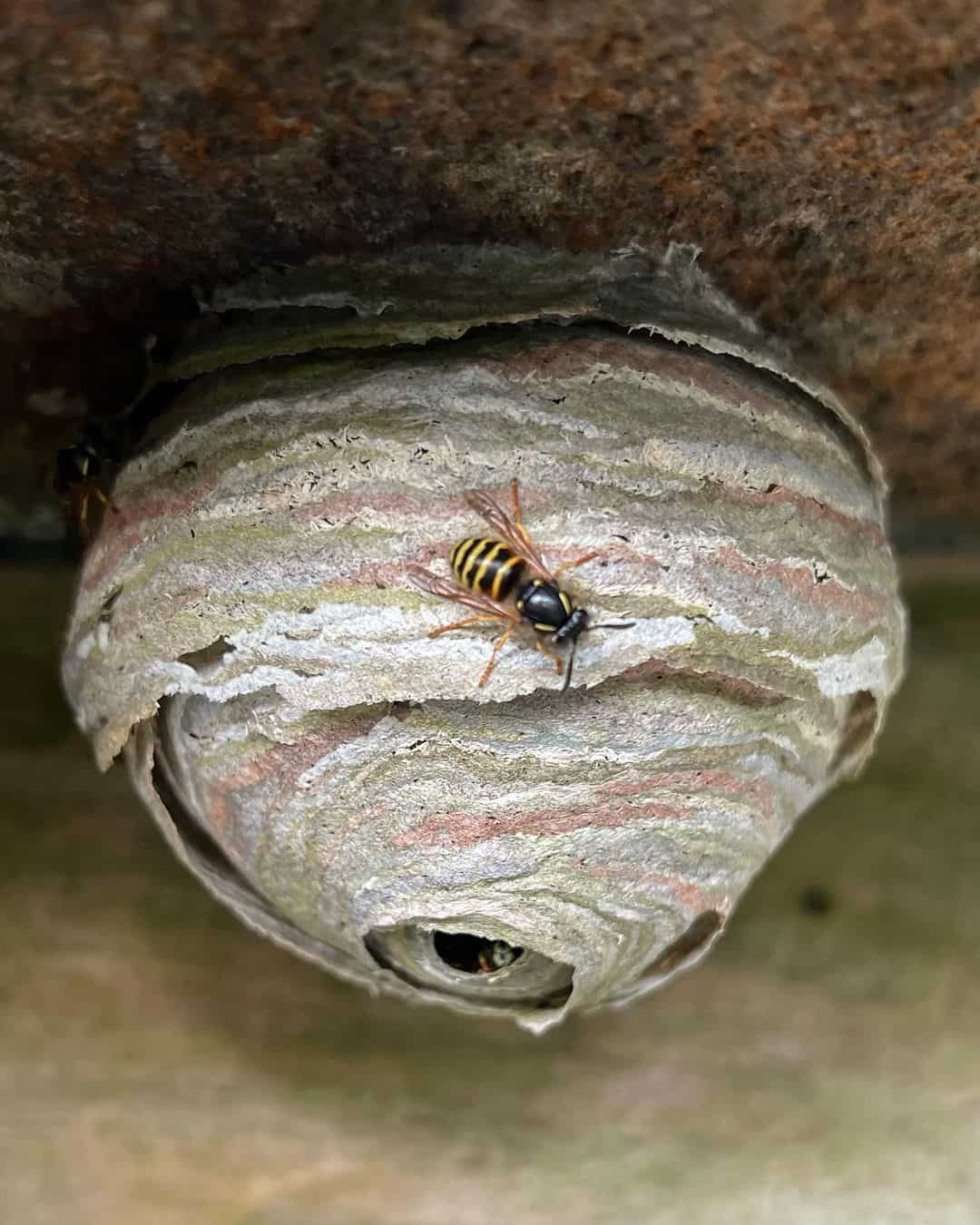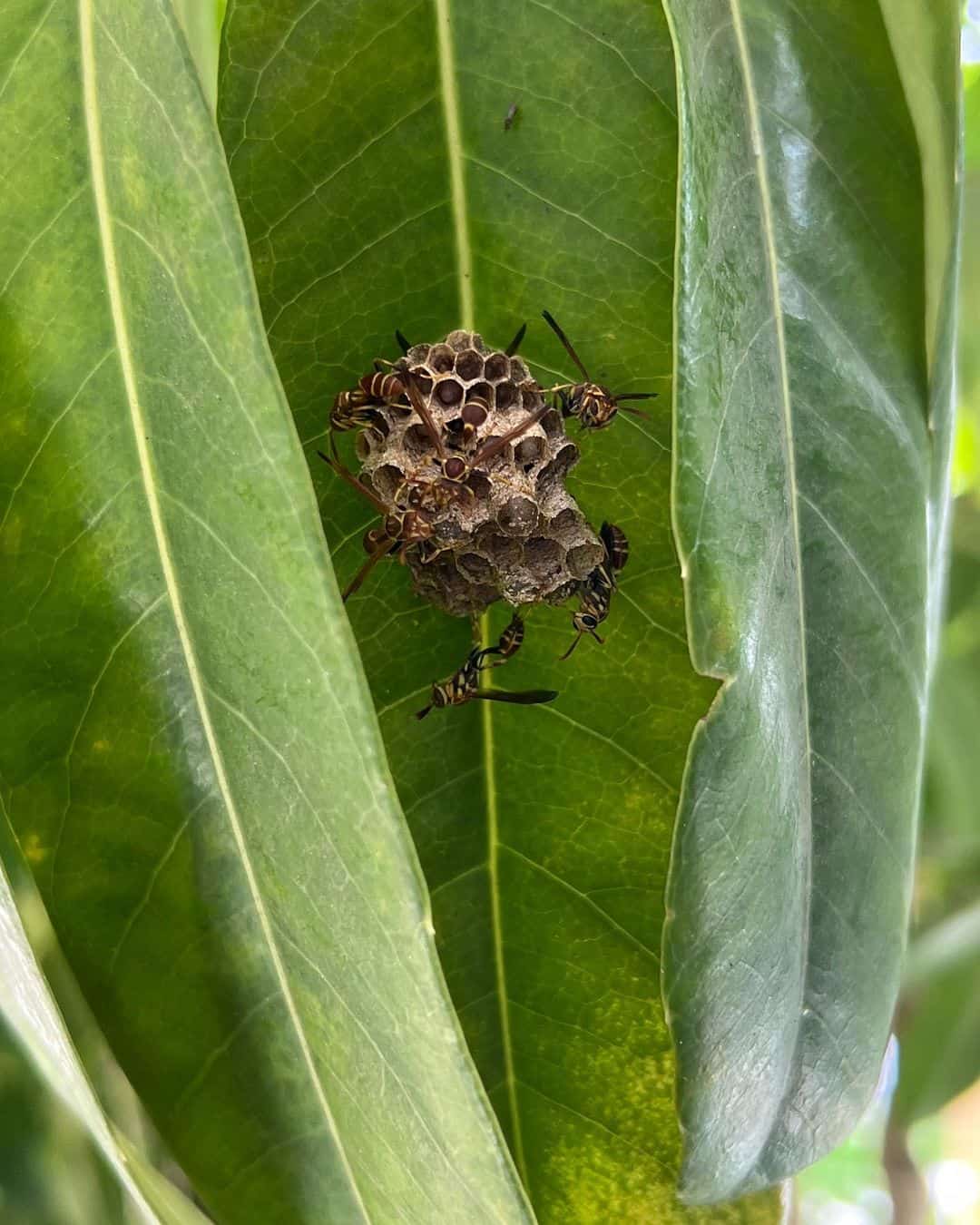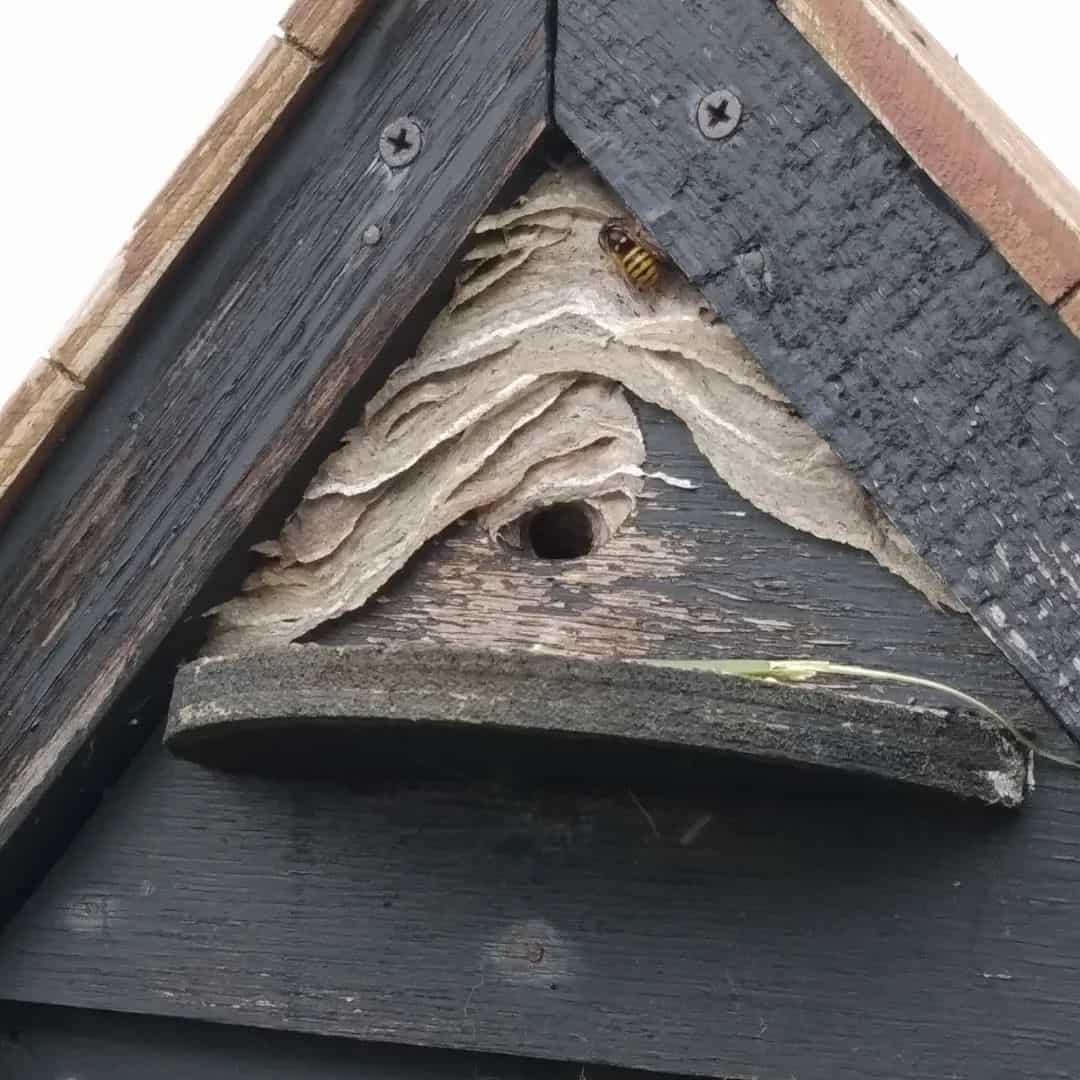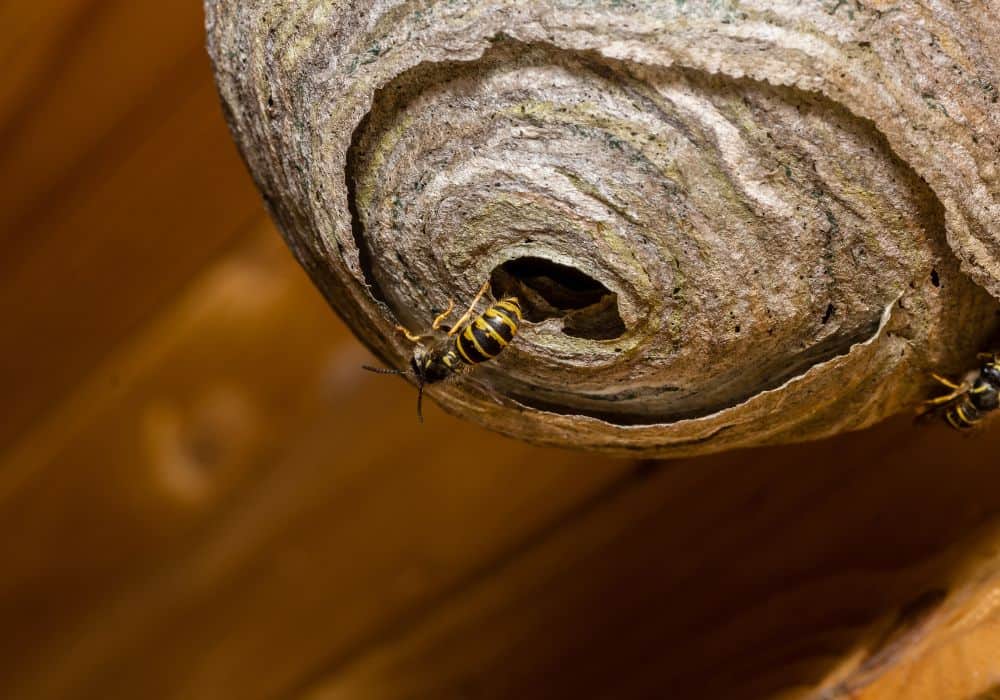Do you hate wasps? Or simply want to learn more about them?
Well, we are glad that you have stopped by our page.
Like bees, most people avoid wasps for an obvious reason: they sting. These creatures often live in swarms and can sting their victims repeatedly.
And the worse part? They don’t leave their stinger behind – they can withdraw and use it on you repeatedly.
That explains why some individuals have a persistent fear of wasps or Spheksophobia.
But like most things, people usually focus on the negative side and ignore the positive. Despite their vicious natures, wasps are helpful to the environment as they help control pests and pollinate plants.
That said, today’s article will focus less on wasp stings and more on what colors these creatures are attracted to. This way, you can avoid certain shades to keep these pesky insects at bay. Let’s begin!
Do Wasps See Colors?
Rarely would you see wasps landing on flowers like butterflies and bees. So, this begs the question: do wasps see colors?
Before we can answer this question, we need to understand how these deadly machines see the world.
Wasps use three simple eyes and two compound eyes to detect movements and discern between light and dark.
The compound eyes consist of hundreds if not thousands, of smaller eyes that collect information and present it to wasp as a single image. These eyes provide wasps with an excellent range of vision. This holds, considering these flying insects can detect motions behind them more efficiently than humans.
However, compound eyes are not without their fault. For instance, they don’t offer similar clarity and focus as simple eyes. Luckily, wasps have antennae that provide additional data like smell for more clarity.
As for the simple eyes, they have simple lenses that allow this creature to differentiate between light and dark. But it’s important to note that wasps rarely see in the dark, except hornets.
So, how do wasps see color?
The compound eyes in these flying machines feature tiny segments referred to as ommatidia, which allows them to see in full color. But unlike humans, wasps are limited to certain frequencies.
Their eyes usually detect light spectrum displaced by a higher range of frequencies. In simple terms, wasps cannot detect red and infrared colors. But they can see a color spectrum ranging from yellow to ultraviolet.
Color Is Associated with What Wasps Find Important
Like honey bees, wasps associate several colors with their favorite foods. For instance, wasps that consume nectar from purple orchid flowers are likely to fly toward purple colors. Those that eat spiders that nest on yellow dandelions will be highly attracted to shades of yellow.
However, certain wasp species are generalists, like hornets and yellow jackets. That means they can feed on a variety of food sources, from nectar to delicious bugs. Because of this, these wasps will flock toward a range of bright and beautiful colors.
But that’s just the tip of the iceberg:
Wasps also have an aversion to dark colors, like black – a trait common in their cousins (bees). As a fact, they are more likely to attack anything closer to black. Part of this preference is because black is associated with natural predators. The same goes for brown colors.
What Colors Are Wasps Attracted To?

Image Credit: jackwallingtonnature
In this section, we will highlight the various colors wasps find attractive. This way, you can discourage them from targeting you or establishing nests around your property. Let’s check them out.
1. Green
Wasps show a great affinity for the color green. This makes a lot of sense, bearing in mind that green is the primary color for most insects that fall prey to wasps. These could include katydids, crickets, and a selection of caterpillars.
Another reason wasps may be drawn to this hue is green-leaf volatiles (GLVs). Plants cannot shield themselves from attack from micro-organisms and insects.
But this doesn’t mean they are defenseless. When a plant tissue gets attacked by a caterpillar, it quickly produces green leaf volatiles.
These molecules inform nearby predators of the presence of prey. So, if a wasp is close by, it will be drawn to the plant, helping it to eliminate the potential threat.
2. White
Besides eliminating destructive pests, wasps help in pollination. That means they are attracted to flowers, especially white flowers of the parsley family like hemlock and wild carrot.
Sometimes, female wasps enter the inflorescence of fig trees through a tiny pore to pollinate the flower and lay eggs inside the flower’s ovary.
Aside from white flowers, wasps can get drawn to white cars.
3. Yellow
It’s clear by now that wasps love bright colors, and yellow is no different. In an experiment, to sample the effectiveness of multiple colors on wasp traps, yellow ranked as the best. The research showed that yellow traps have a higher potential for attracting a selection of wasp species. But the study also showed that other species are drawn to white traps.
It is also possible that vegetarian wasps are attracted to the color yellow because it resembles the honey produced by bees. They flock to this shade with the anticipation of finding sugars and carbohydrates.
4. Purple
Another color worth highlighting is purple or, more precisely, violet. Since there are few purple-colored-prey out there, wasps may be attracted to purple/violet flowers for their nectar.
Here’s the interesting part: Wasps can also see ultraviolet colors, which are invisible to the human eye. That’s why you might meet nocturnal wasps like the European hornet flying around porches or floodlights.
5. Pink
One thing humans and wasps share is the ability to see the color pink. This color is usually formed when our brains fuse red and purple.
But as we mentioned earlier, wasps often fly past different shades of red, as this color sits outside their range of vision.
So, why do wasps find the color pink intriguing?
Truthfully, we don’t have an answer for you at the moment.
However, research shows that wasps are more likely to get captured in pink traps than in yellow or white traps. This rings true, especially for oriental hornets, known for consuming a diet of insects and meat (fresh or spoiled).
What Else Are Wasps Attracted To?

Image Credit: suremliquidz
1. Sweet Aromas
Wasps have a sweet tooth or, more like, a sweet antenna. They use their antennae to feel the surrounding air and locate sweet aromas from potential food sources, like fresh juices, soda, or fallen fruits.
Since they have a more powerful sense of smell than humans, they can travel long distances from their nest to acquire food. Later, they will fly back home relying on the pheromones produced by fellow family members.
To avoid inviting wasps to your home, consider covering food, and placing covers on compost heaps. If you drink canned soda or juice, use a straw because this insect can fly inside the can without you noticing.
Although people say bees and wasps are attracted to the aroma of perfume and cologne, no research supports this information.
However, the giant Asian hornet might be an exception in this case. These deadly hunters produce pheromones with esters and alcohol, usually present in food coloring and perfumes. But no one knows if scents from perfume can attract them.
2. Sheltered Areas
Like many insects, wasps will use sheltered areas in your home as nesting spots. This is because such areas provide them with shade, coverage, and warmth, and protect them from predators.
So, if your home has gaps and small cracks, wasps might use them to establish their nest.
3. Meat
Yes, you’ve read that correctly: wasps are attracted to meat and other protein-based foods like pet food and picnic scraps.
During spring and early summer, queen wasps require lots of protein to recover their strength to build nests and lay eggs.
So, they will fly around looking for potential protein sources. But they might also chew wood fibers from logs, decks, plants, and wood patio furniture.
Effective Ways To Keep Wasps Away

Image Credit: rachello.bevanbaker
Some wasp species might appear small, but they can become a huge problem for homeowners. Wasps can erect their nest around your home, increasing the risk of getting stung.
But the good news is you can avoid these pesky invaders using the following tried and tested strategies.
1. Carry Out Routine Maintenance
Even if your door and windows have a screen, wasps can still find a way into your house. All they need is tiny gaps where they can get in. That’s where routine maintenance comes in.
Check between the mortar and your bricks, eaves, areas around your vent, and even beams and supports in your garage for potential entry points.
Remember, wasps can construct their nests in these areas. So, if you notice any potential access points, patch the cracks and crevices with caulk.
But if you discover a wasp indoors, don’t seal its nest inside the wall. The wasp might not die off as you expect. It might chew through the drywall or find a new place in your house to establish a new nesting area.
2. Maintain Cleanliness
Thanks to their keen sense of smell, wasps can be drawn to potential food sources a mile away. It’s not a surprise to find wasps buzzing around exposed garbage, composting food matter, and recycling bins.
To keep these stinging insects away, ensure you tightly seal the lids of your trash cans or garbage bins. Also, opt for composting your food material indoors, particularly if your garden compost pile attracts bees and wasps.
It also helps to clean up spills and food scraps after a picnic to keep wasps at bay. Another thing, keep sugary beverages, like sodas and juice, out of reach.
3. Handle the Floral Dilemma
Vegetarian wasps are often drawn to nectar-producing flowers. If you want to deter them, avoid plants with colorful or sweet-smelling flowers. Instead, grow plants like lemongrass, spearmint, mint, and citronella. The best part, these plants require less attention.
4. Use Wasp Repellents
Natural wasp repellents like peppermint oil tell wasps that they are not welcome. Just mix a few drops of the oil with water in a spray bottle and apply it to areas wasps find attractive, like picnic tables, the underside of porches, eaves, etc.
Additionally, you can use other effective repellents like thyme, eucalyptus, cloves, and several essential oils.
Conclusion
It’s true, wasps prevent the world from being overrun with insects like spiders and other pests. But they can become a nuisance when they establish nesting sites near human settlements. Not only do they disrupt summer picnics but also sting whenever threatened.
Fortunately, there’s a simple solution to keeping them away. Avoid the colors they are attracted to in your garden, porch, or backyard. These include purple/violet, white, yellow, pink, and green.
Besides that, use the tricks and tips highlighted above to keep wasps away naturally and enjoy a peaceful environment.
Thank you for stopping by!
